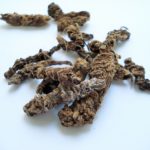Today, we can find an ever-increasing number of products in the market, which allegedly have benefits in our health. For example, many vendors who offer kratom also offer other products, such as mitragyna hirsuta, akuamma seeds or kava root. On the other hand, due to the controversy of kratom and the ban of this plant in some parts of the US, there is a high number of kratom alternatives in the market. Additionally, due to FDA restrictions, vendors can’t advise on how to take or dosage these products. For this reason, many times customers, especially those who are new to these substances, don’t know which one to choose.
That’s why it is very important to do a thorough research before purchasing any products and compare the effects that they have. In this article, we’ll give you an overview of kratom vs. kava root, their properties and effects, and their differences and similarities.
Kratom Properties and Effects
Kratom is a plant that belongs to the coffee tree family that grows in the wild in the rainforests of some South East Asian countries. For centuries, the native cultures of these part of the world have chewed kratom leaves for different reasons. In some cases, they used it for its mood-lifting and stimulating effects. But also, for its relaxing and soothing properties.
But, how is it possible that kratom is relaxing and stimulating at the same time? This will depend on the dosage and obviously on the kratom type. Typically, people use kratom to ease a number of conditions, including:
Additionally, there are consumers that take kratom to feel its stimulant and energy boosting properties.
Kratom Types and Effects
There are three main kratom types: white, green and red. Although there are no different species of kratom trees, the way the leaves are processed after harvest will give them different color patterns. And these leaf colors are what give each kratom type its name.
So, what are each kratom type effects?
- Red vein kratom: typically, these strains are more calming, soothing and relaxing. In addition, they have great pain-relieving effects. Also, its varieties are favored by those who are seeking to ease opiate withdrawal symptoms or to aid sleep.
- White vein kratom: it has stimulant, euphoric and mood-lifting effects. Also, it can help with concentration and motivation. That’s why some users take this variety in the morning to go through their working days.
- Green vein kratom: this type is sort of a middle ground between the other two. In fact, some users mix it with one of the others to feel a more rounded effect. Additionally, its effects are milder than the other two types. Green vein kratom has pain-relieving effects and can be used to combat social anxiety.
Finally, depending on the dosage the effects may differ. Whilst kratom is typically more stimulating at lower doses, it tends to be more calming at moderate to larger dosages. Nevertheless, you must consider that this is not true for all consumers. That’s why it is very important to choose your strain depending on your specific needs.

What is Kava?
Kava or Piper methysticum is becoming very popular in recent times. Today, there are many kava bars opening everywhere, and users find them a great alternative to regular alcohol bars.
But what is kava and why is it so popular? Kava is a plant of the pepper family native to South Pacific islands, such as Fiji, Tonga, Hawaii, and Polynesia. A decoction of its root has been traditionally used in these regions to prepare a beverage that was used in rituals and ceremonies. But the plant is not only used in social events but also it poses some properties that can have an impact on the overall health.
Kava Properties and Effects
The kava root active compounds are the kavalactones that are present in its roots. Studies have found that these substances have the following properties:
- Relaxing
- Sedative
- Anti-convulsive
- Muscle-relaxation
- Antioxidant
Some users also report that drinking kava can help with tobacco and opiate withdrawal symptoms. Additionally, its relaxing properties can relieve insomnia. On the other hand, kava is said to improve cognitive functions.

Kratom Vs. Kava: Similarities
As we’ve already seen above, kava and kratom have some things in common. For starters, both have been traditionally used by people of the regions where they come from. But they also have some common properties that we’ll see below:
- Relaxing effects: both substances can effectively ease stress and anxiety.
- Social anxiety: it is well known that some kratom strains and varieties can be very helpful when dealing with this situation. On the other hand, kava has been traditionally used in social events. In fact, many people today are starting to go to kava bars instead of traditional alcohol bars.
- Energy and stimulation: kava and kratom can be stimulating and improve energy at lower doses and have euphoric effects.
- Antioxidant: both kava and kratom contain compounds with antioxidant properties.
Considering the above, kava can be a good kratom alternative for certain conditions. But kava and kratom also have many differences that we’ll see below.
Kratom Vs. Kava: Differences
Although there are some similarities between kava and kratom, they are different substances. That’s why you can’t completely substitute one for the other. One of the main differences is how each one acts on pain. Although both have pain relieving properties, kratom is much more effective than kava when dealing with this condition, especially when dealing with chronic pain. Kava, on the contrary, is more efficient when dealing with muscle pain as it contributes to muscle relaxation.
Additionally, kava and kratom’s compounds act differently in our system. Whilst kratom acts on the GABA receptors of the brain, kava acts in the serotonin and norepinephrine receptors. Nevertheless, both can improve relaxation and relieve stress.
Finally, remember that you should never mix kava and kratom, as they can interact together and provoke unpleasant effects.
How about you? Have you tried any of these substances? If so, which one do you prefer? Please, go ahead and let us know in the comments below.



